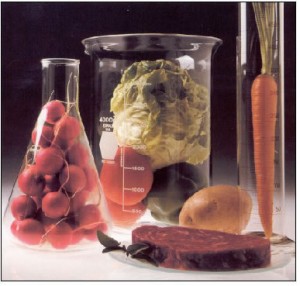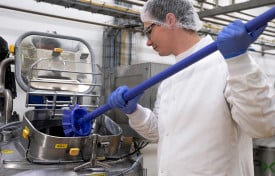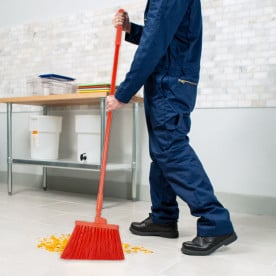The science of sustenance. Diet developments. Munchie modification. Whatever alimental alliteration you choose, it’s all covered under a food processor’s “Research and Development” department. Almost all food manufacturers have an R&D division whose responsibility it is to improve existing products and manufacturing processes, extend current product lines and develop entirely new foods. Today we highlight some of what’s trending in food development.
 Apples and Orange (Bananas)
Apples and Orange (Bananas)
Color is extremely important when it comes to food perception. Studies have shown that when it comes to our experience of food, food color is more important than food labeling or food taste. On a related note, food presentation garners similar results. Enter the “Arctic Apple”, a new breed of non-browning apple. Arctic Apples look and taste like a regular apple, but do not brown like traditional cut apples unless they sustain significant damage, like a fungal or bacterial infection. Proponents of the Arctic Apple feel that nonbrowning apples are more attractive to consumers, and thus will reduce food waste and increase fruit consumption.
Bananas are also getting a makeover. Scientists are currently testing a “super banana” with orange flesh that’s derived from genetically-modifying the banana’s amount of beta-carotene. The peel is yellow and it tastes like a normal banana, but the inside fruit is an attractive shade of cantaloupe orange. The hope is that the super banana will eventually help to prevent blindness in malnourished children around the globe.
A new variety of “Burgundine” asparagus is currently being trialed in the United Kingdom. Burgundine asparagus is the result of crossing normal green asparagus with an heirloom breed of purple asparagus. The resulting violet-hued stalks contain less lignim, the substance that makes asparagus fibrous, and can be eaten raw or cooked. Bring on the dips!
There’s Diamonds in Them Thar Jars
Put down the spoon and back away from the jar. That peanut butter that you were about to lick might be better suited for your home safe than for your cupboard. By mimicking the conditions of the earth’s mantle, a researcher in Germany has turned peanut butter into diamonds. What the what? Yes, peanut butter diamonds. Diamonds need carbon combined with intense heat and pressure in order to form, and, as it turns out, peanut butter is a pretty good source of carbon. Don’t run to Costco just yet, though. The peanut butter diamonds are small, fragile and impure, and eventually disintegrate.
Lick Or Treat
A Google search for “licking the yogurt lid” yields over 90,000 results, Facebook pages and blogs are dedicated to the activity, and ad campaigns by Yoplait and Muller have been based around it. Until recently, however, there was no solution to the obligatory-yogurt-stuck-on-the-lid phenomenon. Morinaga Milk, a Japanese company, has changed that. They’ve developed a nonstick technology for yogurt lids that’s inspired by the lotus leaf, which is known for repelling water and staying dry and clean. As to the obvious question as to why no one’s thought of this before, apparently it’s quite difficult to simultaneously repel yogurt while maintaining container sealability. Pesky physics.
Source: Institute of Food Technologists







